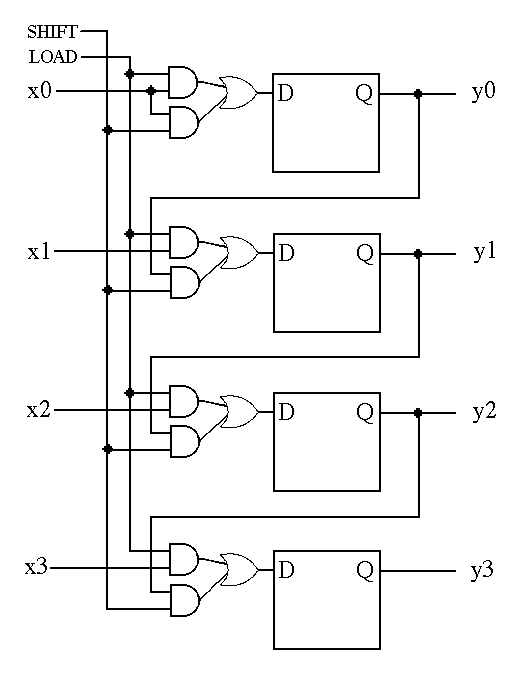This is part of the "counter and register notes" web pages, which contain the
following subtopics:
- Ripple counter
- Synchronous counter
- Synchronous counter with reset
- Very simple register (parallel load)
- Very simple shift register (serial load)
- Designing a circuit which can shift or load <-- you are here
- More realistic shift register with parallel load
A register which can shift or load

Conspicuously absent from this picture is the clock.
We could OR together the SHIFT and LOAD lines and feed that into each
flip-flop's clock.
But we'd like to move towards being able to synchronize with an external
clock, so that the entire circuit, of which our register will be just one
part, can advance synchronously.
So let's move on to the
fully-functional register, next.
This is part of the "counter and register notes" web pages, which contain the
following subtopics:
- Ripple counter
- Synchronous counter
- Synchronous counter with reset
- Very simple register (parallel load)
- Very simple shift register (serial load)
- Designing a circuit which can shift or load <-- you are here
- More realistic shift register with parallel load
[list of course notes topics available]
[main course page]

